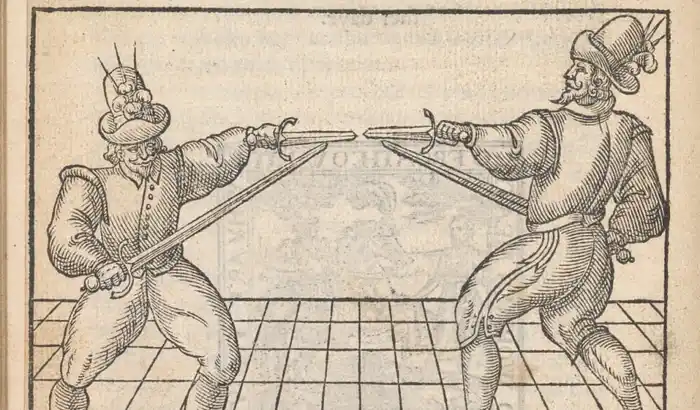The story of Romeo & Juliet is surely as old as time.
Taken from the British Library’s collection on Shakespeare. Read more.
The play’s first audiences, perhaps at the Curtain Theatre in Shoreditch, seem to have responded powerfully to this story of volatile emotions and passions lived to the extreme: the first quarto of 1597 refers to it being ‘often (with great applause) played publicly’.
It is not hard to see why. The play is set in Verona, but – as so often with Shakespeare – the streets we hear described on stage are also those of the bustling, overcrowded, pestilent, noisy and noisome city in which he lived and worked. London was a young city in the 1590s, and the crowds who took their chances with prostitutes and pickpockets in the entertainment districts were even younger; contemporary reports suggest audiences at the open-air theatres were predominantly male, and (unlike ‘private’ indoor playhouses, where admission cost at least six times as much) were drawn from all ranks of society.

For this youthful, restless crowd – some of whom were bunking off work to attend – the violent skirmishes between the Capulets and Montagues that dominate the action must have been a major part of the attraction, and the swordfighting skills displayed by Shakespeare’s colleagues will have been watched with a keen eye. It is an amusing thought that for at least some of these artisans and apprentices, the lovers and their all-consuming passion might have seemed almost incidental.
For greyer heads in the audience, the image of young men on the prowl and a city slipping into mayhem would have been only too familiar. In summer 1595, two years before that first quarto was printed and perhaps in the same year Shakespeare was writing the play, a series of riots in London over rocketing inflation caused the authorities to panic. On 29 June, a 1,000-strong army of young apprentices and soldiers marched on Tower Hill; on 4 July, martial law was imposed.
Audiences at early performances of Romeo & Juliet must have watched the opening with a nervous shiver, and wondered whether the couple in the play’s title would be the only ones caught up in the tragedy.
Questions🔗
Answer these questions in your book
- How does the first scene of Romeo and Juliet mirror Shakespeare’s London?
- Audience at open-air theatres were predominantly made up of who?
- With this in mind, why might Shakespeare have started his play with violence?
- If one talks about a contemporary audience, who are they talking about?
- How does this scene set the tone for the rest of the play?
Why do you think masculinity is easy to connect with violence?
Key words
- contemporary
- (adj) belonging to the same period
- martial
- (adj) related to military forces
- mayhem
- (n) chaos, disorder
- pestilent
- (adj) full of plague and disease
- volatile
- (adj) likely to change suddenly
- bunking off
- (v) skipping work
- predominantly
- (adv) mostly; mainly
- rocketing inflation
- (n) a rapid increase in prices and cost of living
- artisans and apprentices
- (n) young workers learning a trade
- first quarto
- (n) the first published version of Shakespeare's plays
- prowl
- (v) to move around stealthily, searching for something